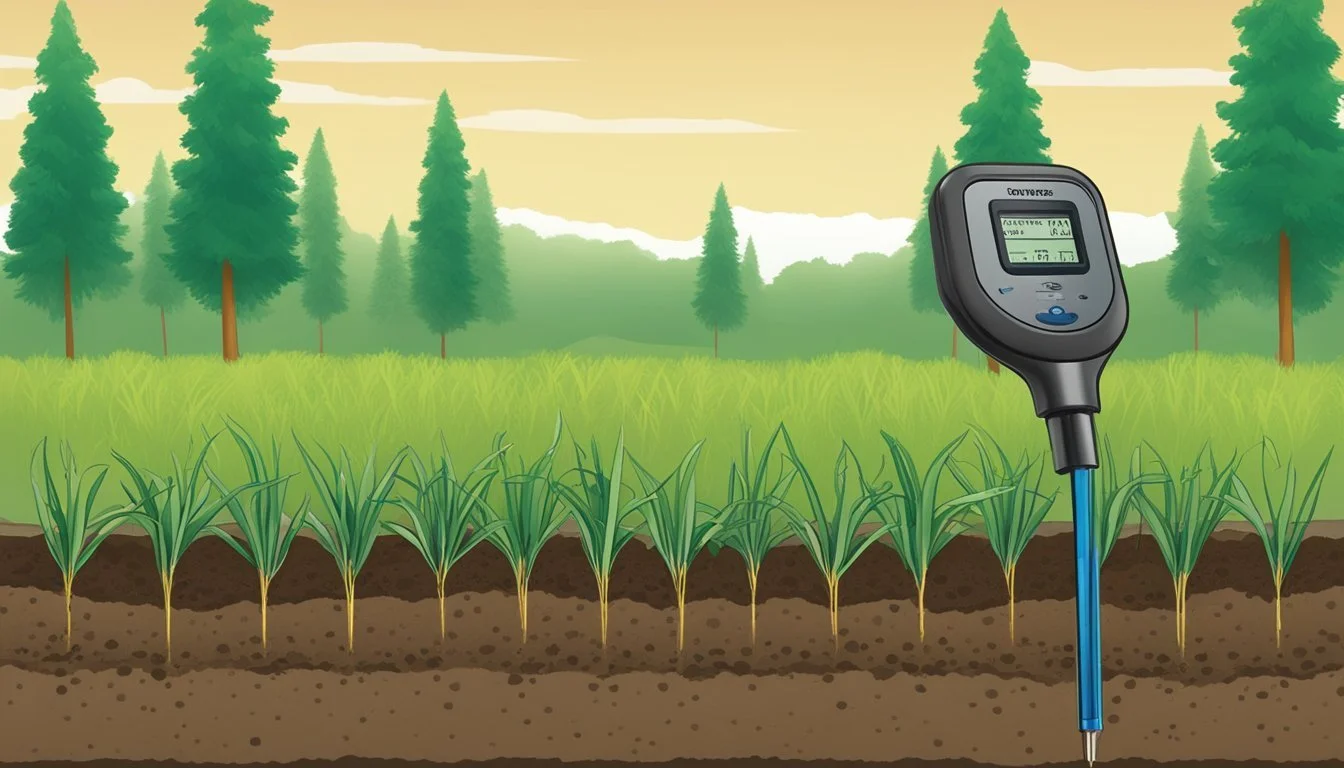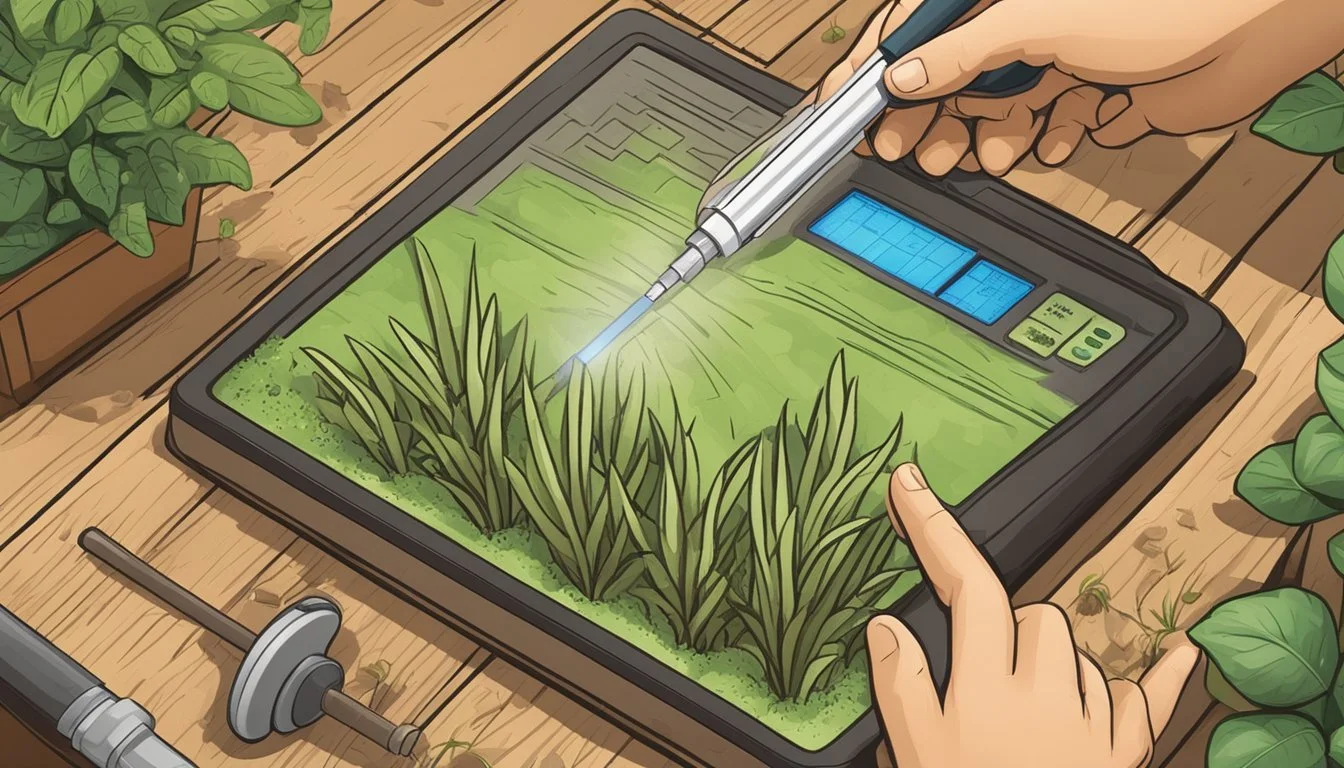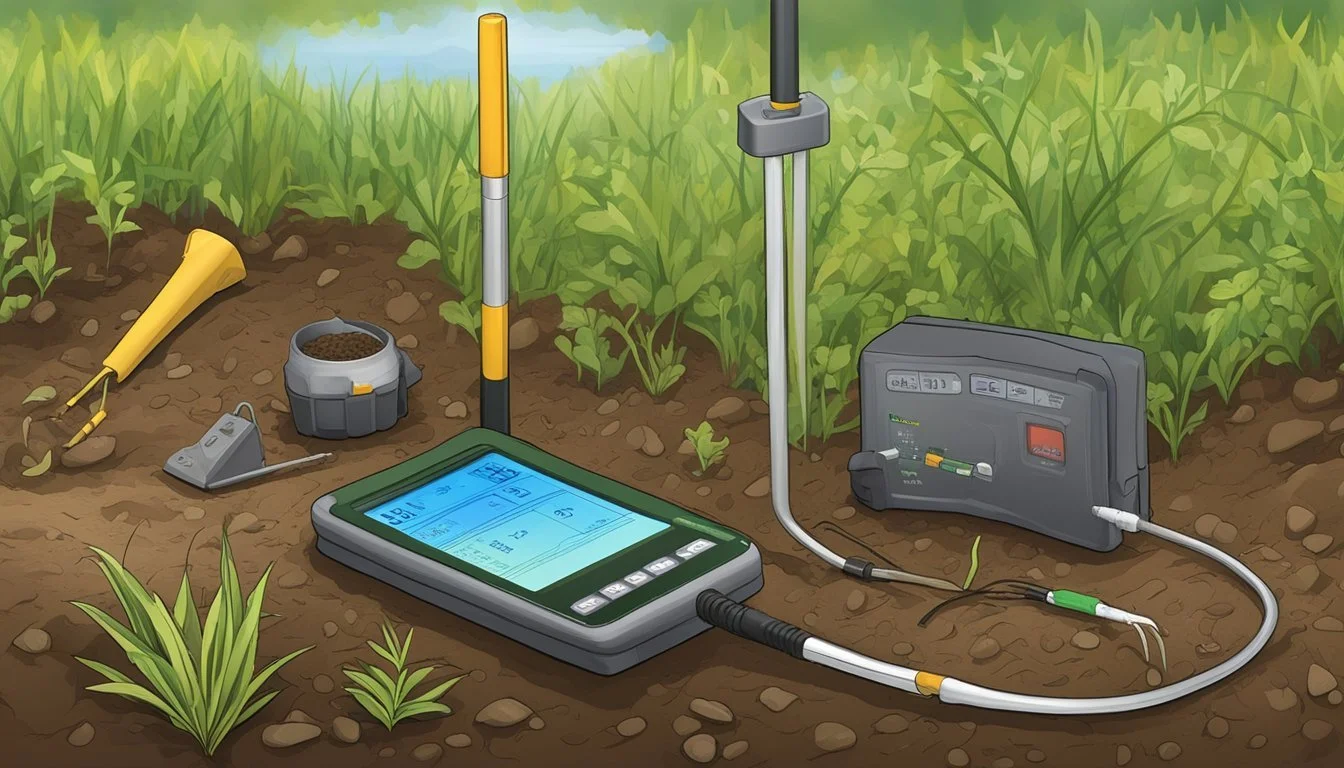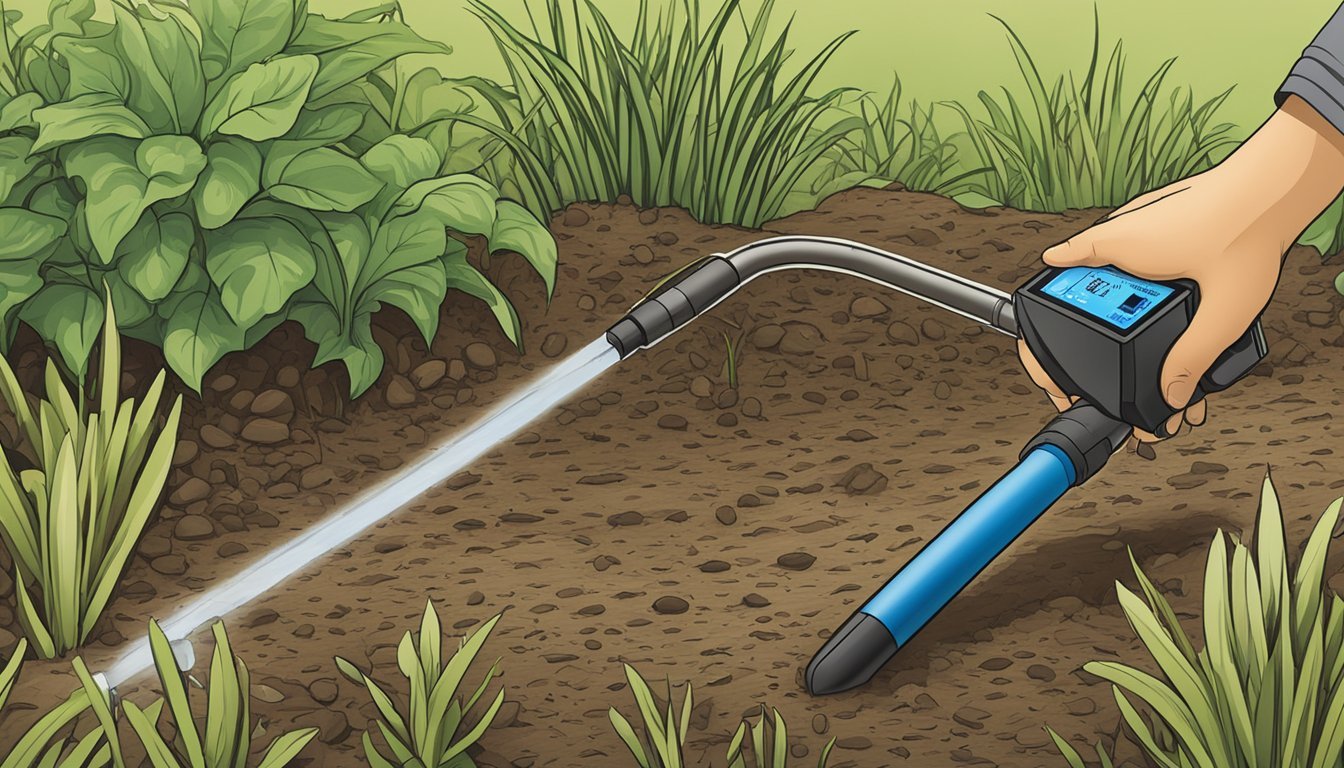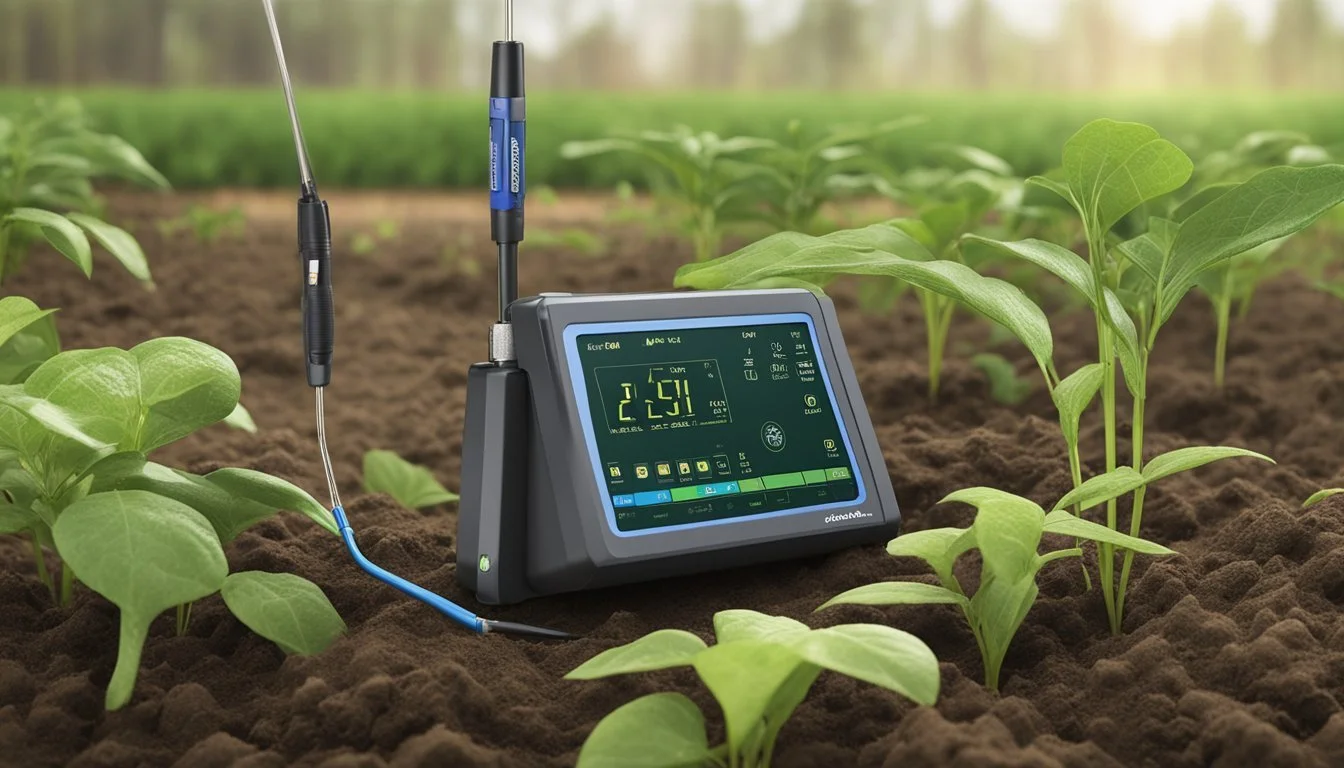The Ultimate Guide to Using a Portable Soil Moisture Probe
Achieve Homesteading Success
Understanding soil moisture is critical for homesteaders who aim to optimize plant health and irrigation efficiency. A portable soil moisture probe is an essential tool for this purpose, providing real-time data that can inform watering schedules and contribute to effective soil management. By measuring the volumetric water content of the soil, homesteaders can make informed decisions that enhance plant growth and reduce water waste.
The use of a soil moisture probe is simple yet highly effective. It is inserted into the soil to gauge the moisture level at the root zone of plants, offering an accurate reading of the available water content. This information is particularly valuable for managing the needs of various crops, which can differ significantly in their water requirements. Moreover, the advent of wireless technology has made soil moisture monitoring more convenient, allowing for remote data access and timely decision-making.
With the variability of soil types and the specific water needs of different plants, having the capability to assess soil moisture can lead to successful homesteading. A portable soil moisture probe empowers homesteaders with the ability to check soil conditions regularly, adjust irrigation practices accordingly, and ultimately achieve greater control over their growing environment.
Understanding Soil Moisture Probes
Accurately measuring soil moisture is critical for optimal plant growth and efficient water management in homesteading. Soil moisture probes, a vital tool for these measurements, come in various types, each harnessing different principles to assess soil moisture levels.
Principles of Soil Moisture Measurement
Soil moisture measurement is fundamentally about quantifying the amount of water contained within the soil. Measurements can be reported as volumetric water content (VWC), representing the volume of water in a unit volume of soil, typically expressed as a percentage. Another common measure is the water potential, which describes the energy status of water in soil.
Key methodologies for measuring soil moisture include:
Tensiometers: These devices measure soil water potential by gauging the tension of water in the soil.
Capacitance sensors: They work by using the soil's ability to store electrical charge to infer moisture content.
Time Domain Reflectometry (TDR) sensors: Utilizing the travel time of electromagnetic waves through the soil, they can determine moisture levels based on the dielectric constant of the soil.
Neutron probes: While less common for homesteading due to their complexity and regulatory restrictions, neutron probes detect hydrogen atoms, primarily from water, to establish soil moisture levels.
Types of Soil Moisture Sensors
The variety of probes available for soil moisture measurement allows homesteaders to choose a tool fitting their precise needs:
Handheld Probes:
Ideal for on-the-go measurements.
Portable and easy to use.
Wireless Sensors:
Provide real-time monitoring capabilities.
Data can be accessed remotely, often through a smart device or computer.
Portable Probes:
Designed for ease of insertion into the soil.
Models vary in length for different measurement depths.
Each type is equipped with specific features, such as the ability to measure different depths or provide data for a particular range of soil conditions. Users need to match the features of the soil moisture sensor with their homestead's requirements for monitoring and managing irrigation effectively.
Selecting the Right Soil Moisture Meter
Choosing the right soil moisture meter can make a significant difference in gardening success. One must consider specific criteria and examine various popular models to ensure that they select a product that offers reliability and accuracy.
Criteria for Choosing a Soil Moisture Meter
When shopping for a soil moisture meter, gardeners should keep an eye on key features to match their specific needs. First and foremost is accuracy, as precise moisture measurement is critical for plant health. Durability is another important factor, especially for homesteaders who require rugged tools that can withstand regular use; a stainless steel probe, for instance, offers durability and resistance to corrosion. The quality of the device should not be compromised — robust construction paired with reliable performance ensures long-term utility. Additional considerations include the unit's ease of use, the length of the probe for accessing different pot sizes or soil depths, and whether it has a digital or analog display according to user preference.
Accuracy: Precision in reading moisture levels.
Durability: Long-lasting materials, like stainless steel.
Quality: Well-constructed for consistent performance.
Ease of Use: User-friendly interface.
Review of Popular Moisture Meters
The market offers a range of soil moisture meters, each boasting unique features. The REOTEMP Garden and Compost Moisture Meter stands out for its heavy-duty stainless steel probe designed for deep soil saturation checks and compost testing. Its durability and accuracy make it a popular choice among serious gardeners.
Another notable meter, the XLUX T10 Soil Moisture Sensor Meter, captures attention with its simplicity and straightforward analog dial that doesn't require batteries. It's well-suited for indoor potted plants or outdoor garden use and is known for its ease of use and quality construction.
REOTEMP Garden and Compost Moisture Meter
Key Feature: Deep soil moisture assessment
Probe Material: Stainless Steel
Display Type: Analog
XLUX T10 Soil Moisture Sensor Meter
Key Feature: Simplicity and ease of use
Probe Material: Not specified
Display Type: Analog
These products reflect just a snippet of what the market offers, but they exemplify the range of features that cater to the varying needs of homesteaders.
Optimizing Usage
To achieve the best results in homesteading, one must ensure that their portable soil moisture probes are calibrated for accuracy and maintained properly.
Calibration and Accuracy
A soil moisture probe must be calibrated regularly to ensure accurate readings. Most probes arrive factory calibrated, but local soil conditions can vary widely, necessitating adjustments. Calibration should be compared against a known moisture content, and the sensor should be adjusted accordingly. The user can perform a soil-specific calibration by taking samples at various moisture levels and recording the probe's readings to create a custom calibration curve.
Steps for Calibration:
Take a soil sample with known moisture content.
Insert the probe into the soil.
Adjust the probe reading to match the known content.
Record the data to inform a calibration curve.
Maintaining Your Moisture Meter
Maintenance requirements for a soil moisture probe are critical to obtain consistently accurate data. The probe's sensors should be cleaned regularly, removing any debris or buildup that could interfere with its performance. Terminals and connections must also be kept clean and dry to avoid false readings.
Maintenance Checklist:
Weekly cleaning of soil debris from the sensor
Monthly inspection of sensor terminals
Immediate drying if the sensor becomes wet
By following these guidelines, one ensures their soil moisture probe provides reliable data for effective irrigation scheduling and water conservation in homesteading ventures.
Application in Homesteading
Portable soil moisture probes are instrumental in managing soil moisture for the sustenance of healthy gardens and optimal crop production in homesteading settings.
Soil Moisture and Garden Health
Gardens thrive when the balance of water and air in the soil is maintained, as this directly affects plant health. Soil moisture content is a crucial measure for homesteaders to monitor, as it prevents conditions that can lead to root diseases. By employing a soil moisture probe, they can obtain instantaneous and accurate readings, which guide them in watering practices tailored to the soil type and water requirements of their plants. Optimal moisture levels differ among various garden plants, making it essential to adjust irrigation accordingly.
Soil Moisture in Crop Production
In crop production, soil moisture is indicative of the soil’s ability to support crop growth, influencing both yield and quality. Homesteaders use portable soil moisture probes to assess volumetric water content (VWC), which informs them of the precise amount of water available to crops' roots. This data is pivotal for predicting watering needs and scheduling irrigation to ensure crops receive adequate hydration without wastage. Effective water management strategies, derived from soil moisture readings, lead to increased crop production efficiency and conservation of valuable water resources.
Integrating with Water Management Systems
Integrating a portable soil moisture probe into water management systems is pivotal for achieving efficient irrigation practices. These devices contribute significantly to the optimization of water usage and the sustainability of precision agriculture by providing accurate readings of soil volumetric water content.
Establishing Efficient Watering Schedules
Accurate soil moisture data is the cornerstone of establishing an efficient watering schedule. By monitoring moisture levels, farmers can determine the optimal time for irrigating crops, thus conserving water and increasing return on investment (ROI). For instance:
Soil Moisture Thresholds: Set specific soil moisture content levels that trigger watering.
Weather Forecasts Integration: Adjust schedules based on weather predictions to avoid over-irrigation.
In practice, schedules may look like this:
Soil Moisture Level (%) Action Above 80 Delay watering 60-80 Monitor closely 40-60 Schedule moderate watering Below 40 Water immediately
Advanced Water Management Techniques
The use of portable soil moisture probes allows for the integration of advanced water management techniques that can further enhance efficiency and minimize environmental impact. These may include:
Variable Rate Irrigation (VRI): Tailoring water application to different sections of a field based on soil moisture readings.
Irrigation Zones: Establishing zones within fields that are irrigated separately to address varied moisture levels.
Drought Stress Monitoring: Preventing over-watering by detecting early signs of water stress in plants.
By implementing these techniques, farmers ensure that water is used where, when, and in the amount needed, optimizing the water's utility and fostering a sustainable environment within the realm of precision agriculture.
Maximizing Plant Yields
Maximizing plant yields is crucial for homesteading success, as it requires efficient resource use and diligent monitoring of plant health. Utilizing a portable soil moisture probe is key to achieving these goals.
Reducing Resource Wastage
To maximize yield and reduce wasted resources, gardeners must ensure that water and nutrients are optimally utilized. A soil moisture probe provides real-time data, allowing for targeted irrigation that meets the specific needs of outdoor plants, houseplants, and potted plants, without the risk of overwatering or underwatering.
Optimal Water Levels for Vegetables: 41% - 80% soil moisture
Optimal Water Levels for Most Flowers, Trees, and Shrubs: 21% - 40% soil moisture
Monitoring Plant Health
Proper plant growth relies on the balance of soil moisture, which directly impacts plant health. The portable soil moisture probe assists in:
Identifying dry conditions that could stress plants, hindering their growth and yield.
Detecting waterlogged soil conditions that could lead to root rot and other diseases.
By regularly using the probe to monitor soil moisture levels, gardeners can ensure that their plants receive adequate water, which is vital for healthy roots and maximizing yields.
Special Considerations
When using a portable soil moisture probe, special attention must be paid to extreme soil moisture conditions and the distinct water needs of various plants to ensure successful homesteading.
Dealing with Extremes in Soil Moisture
In dry soil, moisture readings may represent the challenge of maintaining adequate water for plants—one must guard against under-watering which can lead to plant stress. Conversely, wet soil poses the risk of overwatering, a common error with severe implications, such as root rot. Users should:
Check for consistency in readings across different areas.
Adjust watering schedules based on the data, not just intuition.
Adapting to Specific Plant Needs
Every plant species has specific needs with regards to soil moisture. A one-size-fits-all approach can be detrimental, as some may require consistently moist substrate, while others thrive in drier conditions. To best adapt to plant needs, one should:
Document the moisture preferences of each plant.
Utilize the probe to ensure these preferences are met, modifying irrigation practices if necessary.
Technical Aspects
In the technical operation of portable soil moisture probes, the performance and accuracy are dictated by two critical factors: the power source and temperature conditions. Each element has a specific role in the effective usage of the device.
Understanding the Role of Batteries
Portable soil moisture probes rely on batteries as their primary source of power. The longevity and performance of these batteries are essential for continuous monitoring without interruption.
Battery Types: Most probes utilize either rechargeable or single-use batteries.
Battery Life: Depending on the model, battery life can range from several weeks to months.
Power Consumption: Devices with lower power consumption rates are beneficial for lengthy field deployment.
Choosing the correct battery type and understanding its life expectancy is crucial for sustained field measurements and data reliability.
Measuring Soil Temperature Impact
Soil temperature directly impacts the accuracy of soil moisture readings. Portable probes often include temperature sensors to account for these variations.
Temperature Influence: As soil temperature fluctuates, it can alter the dielectric constant of the soil, thereby affecting sensor readings.
Temperature Compensation: Reliable probes incorporate algorithms to adjust moisture measurements for current soil temperature conditions.
Monitoring and compensating for soil temperature is a key aspect of ensuring accurate measurements of soil moisture content.
Analyzing Soil Samples
Accurate soil moisture measurement is an intrinsic part of maintaining optimal soil conditions for homesteading. Using a portable soil moisture probe allows homesteaders to take precise readings, which are crucial for ensuring the balance between moisture retention and drainage.
Collecting and Interpreting Data
A soil moisture probe is a practical tool that homesteaders use to obtain immediate soil moisture readings. When inserted into the soil, the probe measures the tension, or the force needed for a plant to absorb water from the soil. These moisture meters typically output data on a scale of 1-10, where 1 indicates dryness and 10 signifies saturation. Reading and interpreting this data correctly can guide irrigation needs accurately. To collect reliable data, one should:
Insert the probe vertically into the soil to the root zone depth.
Record multiple readings from different locations to account for variability.
Average the readings to get a comprehensive view of the moisture levels.
Adjustments for Different Soil Textures
The soil texture—whether clay, loam, or sand—affects how moisture is held in the soil and thereby the reading on the moisture meter. Each texture has a unique water retention characteristic that influences the tension exerted on the water:
Clay soils often show higher moisture levels due to their small particles and high water retention.
Sandy soils may exhibit lower readings given their coarse texture and quick drainage properties.
Loam soils, being a balanced mix, typically provide medium range readings.
Users should be aware that:
Soil Texture
Clay
Loam
Sand
Typical Moisture Reading Range
7-10 (High Tension) for Clay
4-7 (Medium Tension) for Loam
1-4 (Low Tension) for Sand
It is essential to calibrate the soil moisture probe according to these soil textures for precise soil moisture monitoring. Reliable soil moisture measurement empowers the homesteader to make informed decisions regarding irrigation, which in turn ensures the success and sustainability of their homesteading endeavors.
Cost Considerations and Value
When selecting a portable soil moisture probe, the cost is a pivotal factor that weighs heavily on the decision-making process. Equally important is understanding the potential value these tools bring to effective farm management.
Finding a Budget-Friendly Moisture Meter
A budget-friendly moisture meter can often be identified through a comparison of features versus price. Tools like the Safe2m Soil pH Meter, 3-in-1 Soil Tester Kits provide multiple functionalities at a cost-sensitive price point. These meters serve not only to measure moisture but can also provide pH and light level readings. The low-cost options tend to range from rudimentary analog devices to more sophisticated digital probes. For those managing a compost pile or small homestead garden, affordability balanced with necessary functionality are key considerations.
Analog Meters: Typically the most affordably priced, provide basic moisture level readings.
Digital Meters: Offer more features and accuracy, with prices varying based on complexity and additional functions.
Return on Investment for Farmers
For farmers, the return on investment (ROI) from soil moisture probes is gauged by the improvement in crop health, yield, and resource usage. A higher upfront cost for a more advanced system, like those offering wireless connectivity for real-time data monitoring, could be justified by the eventual savings on water usage and an increase in crop yields. Such systems also enable timely decision making, which can lead to enhanced farm management practices and potential cost savings.ROI can be determined by the following factors:
Reduction in Water Waste: Precision irrigation based on accurate moisture data can lead to significant water savings.
Increased Crop Yield: Optimized water usage can improve plant health and increase yield, directly impacting revenue.
Time Management: Automated data collection saves time that can be allocated to other farm management activities.
By weighing the initial cost of the probe against these factors, farmers can decide on a soil moisture probe that offers the best value for their specific needs.
Conclusion
Employing a portable soil moisture probe facilitates efficient water management and ensures robust plant health for homesteaders. These devices offer a real-time understanding of soil moisture levels which is essential for making precise irrigation decisions. They are particularly valuable for personalizing watering schedules to match the varying needs of different crops.
Essential takeaways:
Accuracy: Soil moisture probes give accurate moisture readings, essential for preventing both under and overwatering.
Ease of Use: These tools are user-friendly, allowing for quick assessments without complex procedures.
Time Saving: With instantaneous feedback, homesteaders can react promptly to their plants' watering needs.
Resource Conservation: By supplying water only when needed, one conserves water and enhances the sustainability of their homesteading practices.
Maintenance Tips:
Regularly calibrate the probe for consistent precision.
Clean the sensor post-use, especially before storage.
Replace batteries or charge the device as recommended by the manufacturer.
Homesteaders who integrate portable soil moisture probes into their routine are likely to see a noticeable improvement in their crop yield and vitality. It is a simple step toward more conscious and efficient gardening and farming practices.

